The garden was photographed on the same day
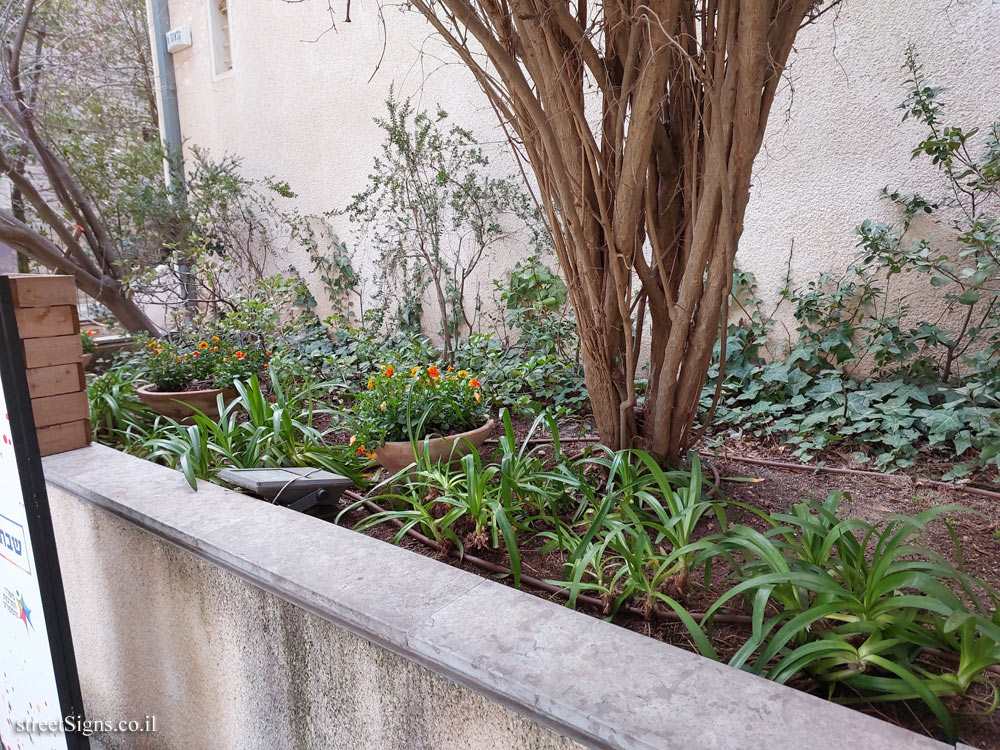 Click for a larger image
Click for a larger image In the garden surrounding the house there are other signs, including quotes from his books:
"I built me a house and planted a garden.
In this place that the enemy asked to drive us from, I built my house, against the place of the temple I built it, to always raise in my heart our favorite house, the sword..."
The ’sign’, the fire and the trees
[Photo in which Shmuel Yosef Agnon is photographed]
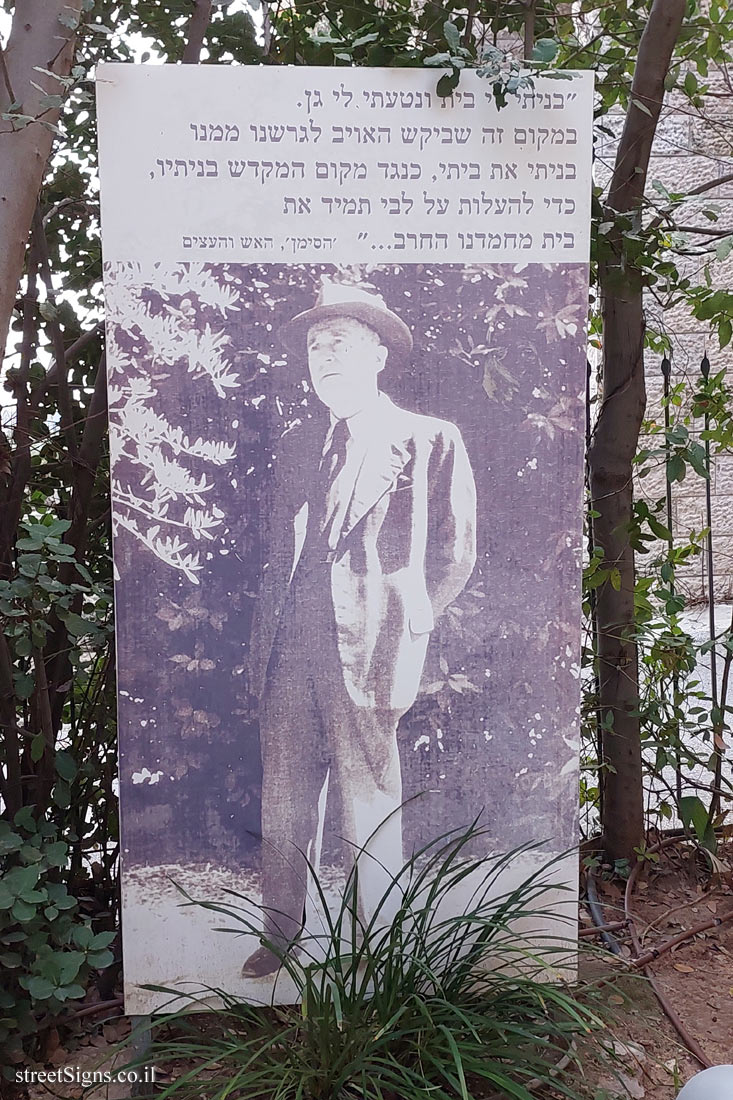 Click for a larger image
Click for a larger image 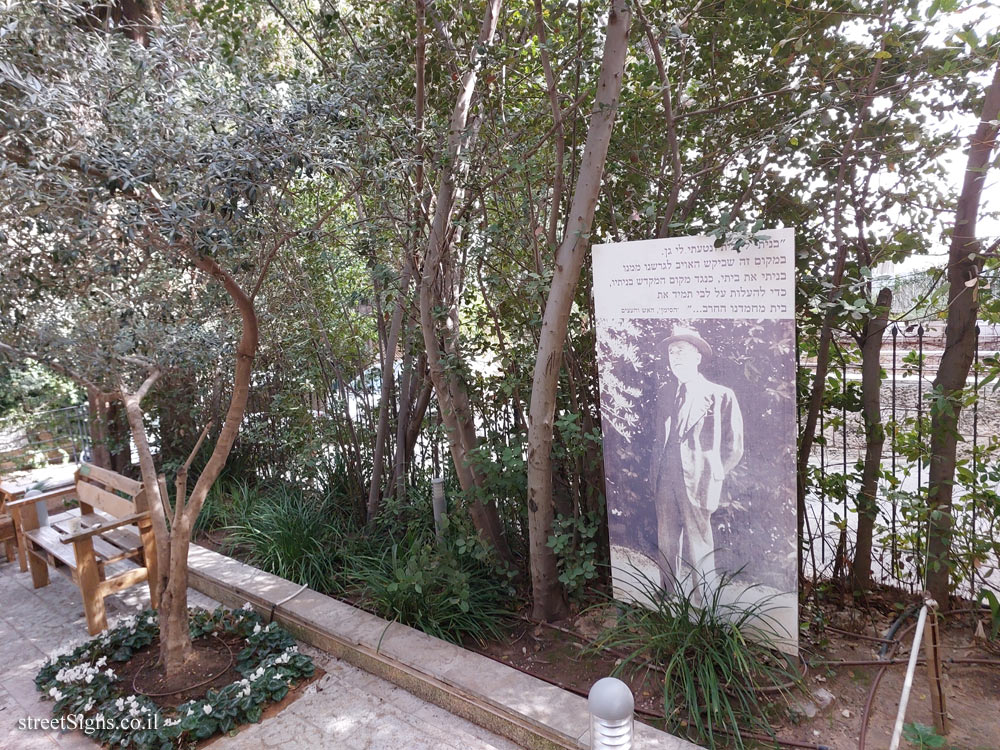 Click for a larger image
Click for a larger image At the end of a few days, I removed myself from all my occupations and went up to Ramat Rachel to visit Rabbi Shlomo 2H. I found him standing in the vegetable garden busy weeding, his nape tanned and his movements measured, like those who deal with the soil.
...I asked him. How did he come to work in the garden? He told me when I came to Ramat Rachel and saw that everyone was dealing with the settlement of Eretz. I told me everything was dealing with the settlement of Eretz and I was doing nothing... When I saw that I was unnecessary, my world darkened."
(Guest tended to stay overnight)
Agnon was in close contact with members of the nearby Ramat Rachel Kibbutz. South of here he watched their agricultural work and learned from it and they came to the neighborhood synagogue and prayed beside him
"Rachel Yanait ben Zvi wanted to plant trees of the seven species in the garden, father was happy with her initiative, she brought seedlings but it was not so successful. Only the olive tree took root, it is the tree that is in front of the house."
(Amona Yaron daughter of Agnon: memories of the house in Talpiot. Interviewed and written by Rochama Elbag)
Rachel Yanait ben Zvi was an agronomist, writer and one of the leaders of the new settlement in Jerusalem at the beginning of the 20th century. Yanait established an agricultural study farm in the city and was responsible for the afforestation of many areas around Jerusalem
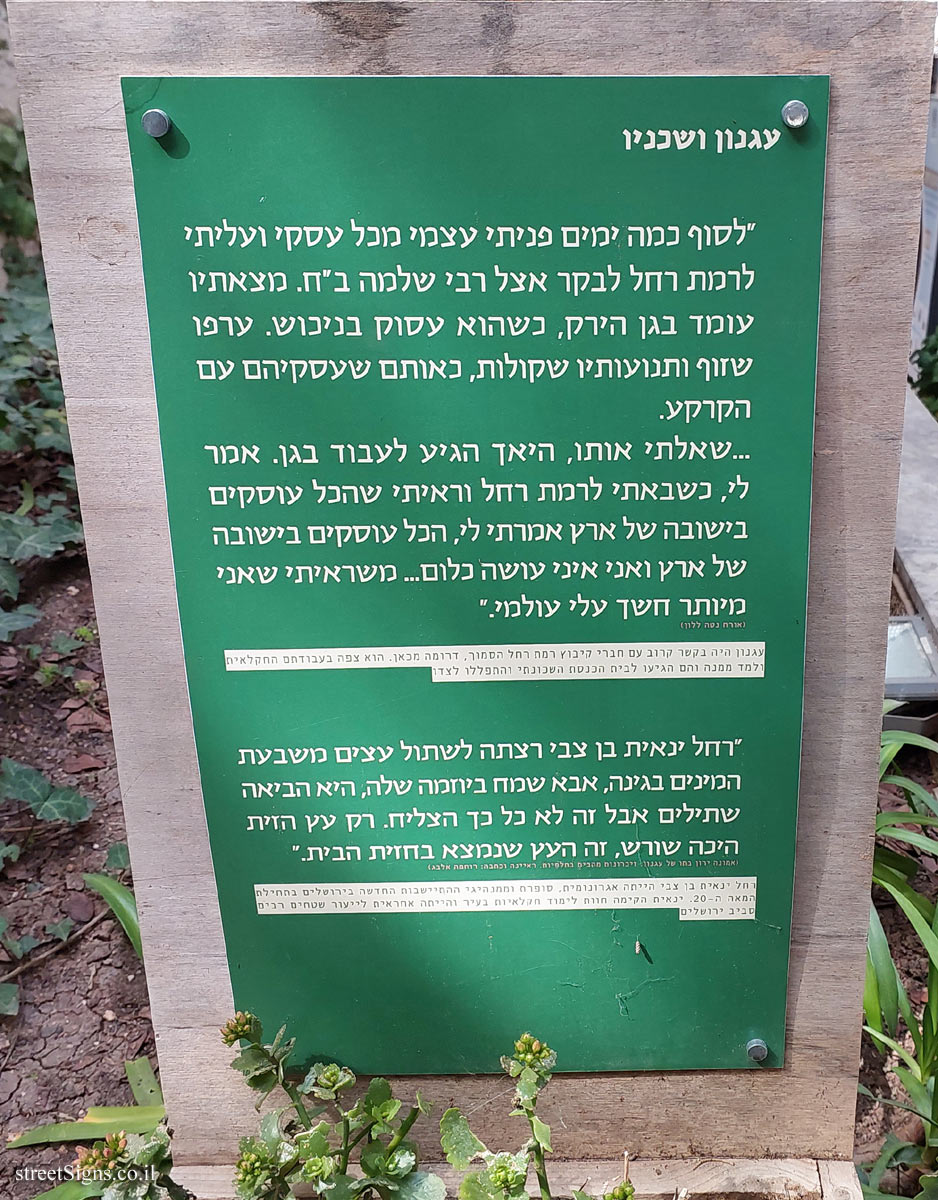 Click for a larger image
Click for a larger image [The olive tree is shown in the next picture]
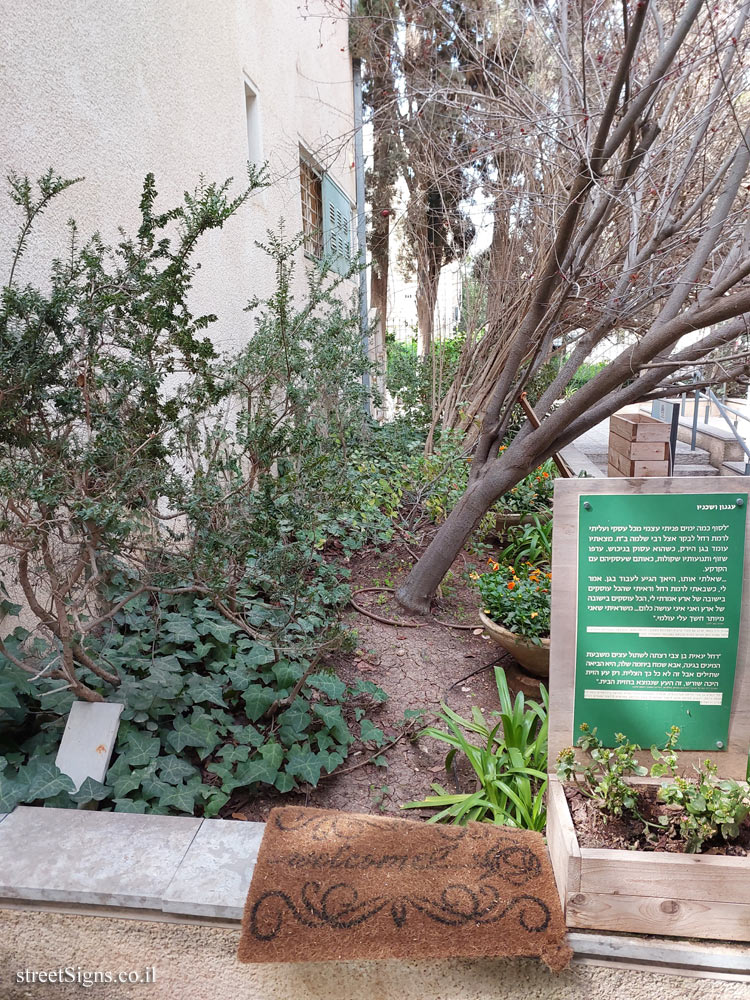 Click for a larger image The cypresses and the wind
Click for a larger image The cypresses and the wind "One night, the wind returned and came to slap at the tree. What did the trees do, they hit him back. The wind returned and hit the tree, the trees returned and hit the wind. No more spirit arose in him. He turned and went away. From then on, the spirit of the tree was humbled and he came on the way of the earth."
(from enemy to lover)
You are standing under a row of cypresses planted by Agnon, the cypress symbolizes strength and eternal life and is considered one of the plants of the Garden of Eden. It is customary to plant cypresses to protect houses or agricultural areas from the wind, since the cypress is upright, tall, stable and densely landscaped, these cypress boulevards are called "windbreaks". Agnon’s preoccupation with the spirit recurs in many stories and especially in the story from enemy to lover.
[Image]
Agnon around his home in Talpiot, 1950s or 1960s, black and white photograph, Beit Agnon collection in Jerusalem
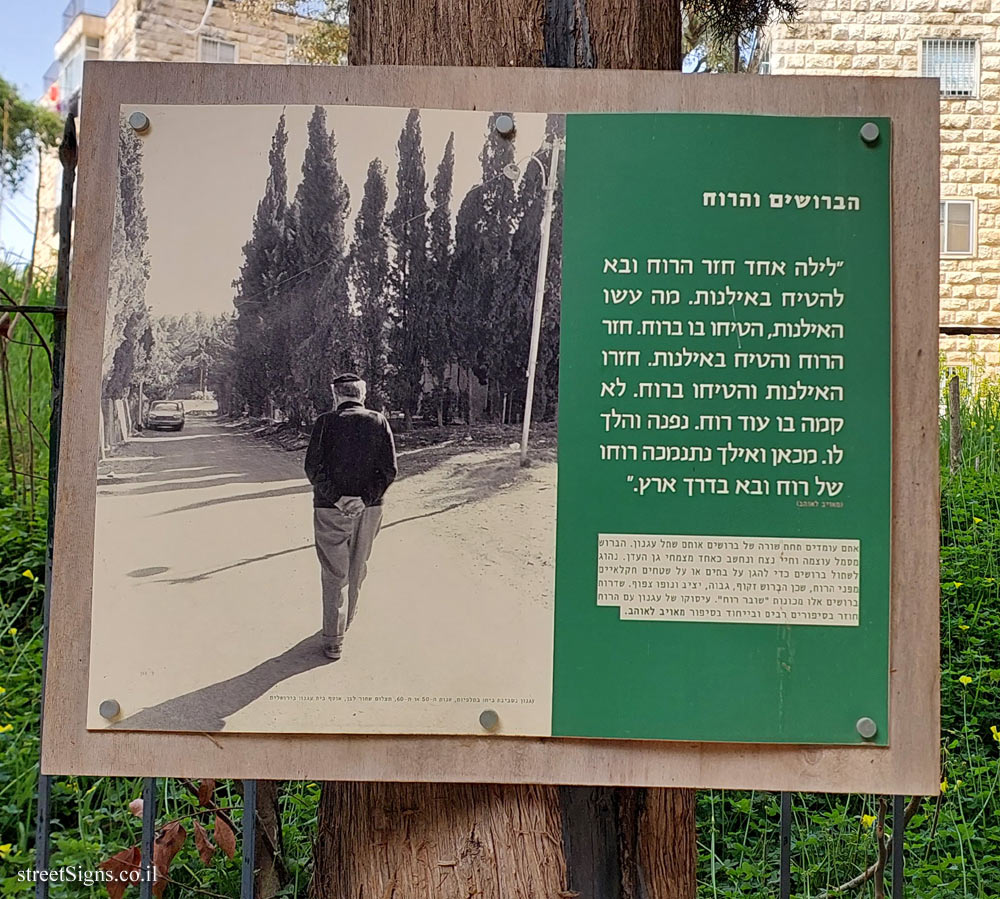 Click for a larger image
Click for a larger image [Cypress Avenue]
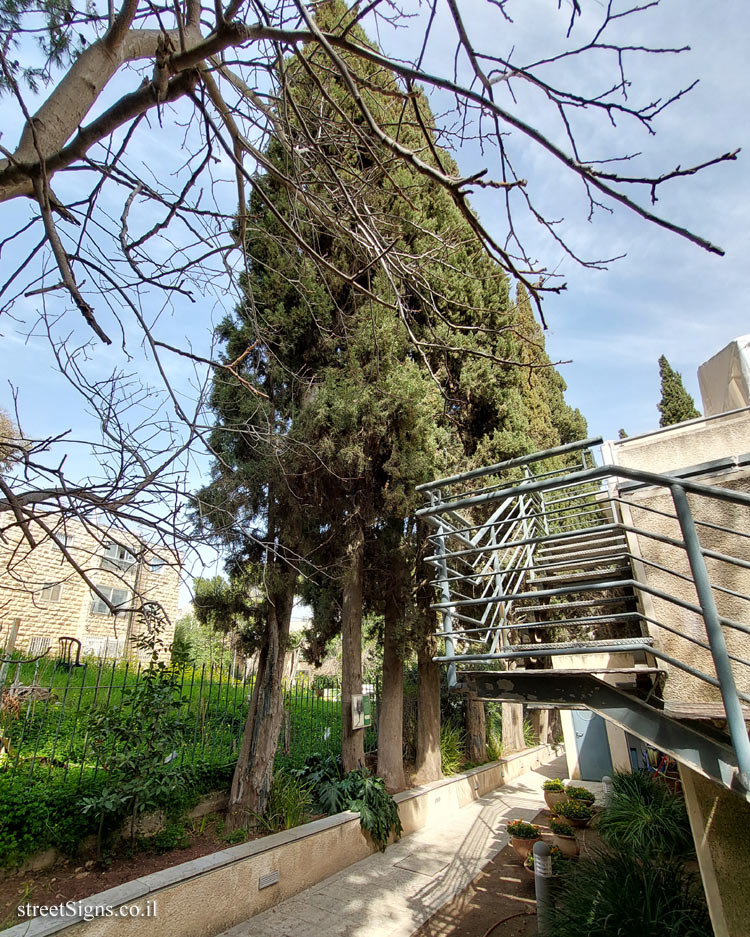 Click for a larger image
Click for a larger image "I said to myself, I will plant a garden. I took a hoe and plowed the ground. Since the ground was plowed, I brought me seedlings. The rains came and watered the seedlings, the dew came and made them bloom, the heat came and made them grow. It wasn’t many days until the seedlings I planted became trees with branches. I did bench and I sat in their shade."
’From enemy to lover’, these and those
[Photo: Agnon dig his garden]
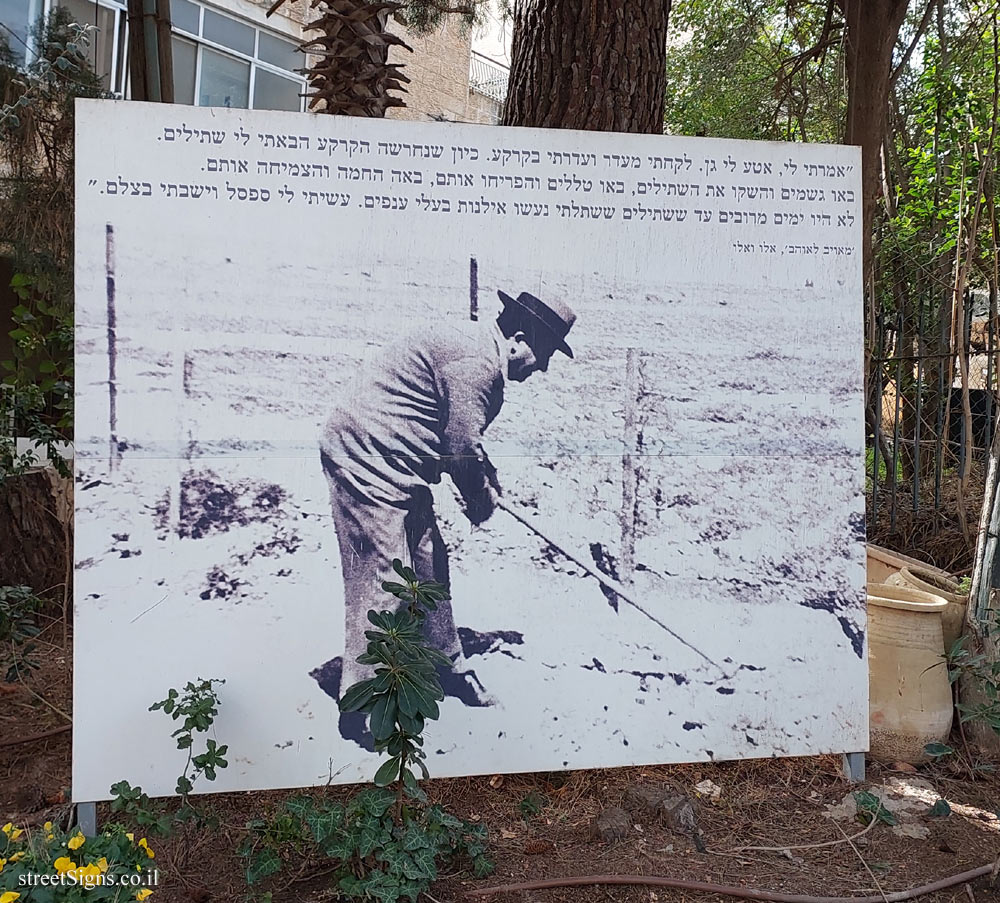 Click for a larger image
Click for a larger image Beit Agnon is a heritage site in Israel
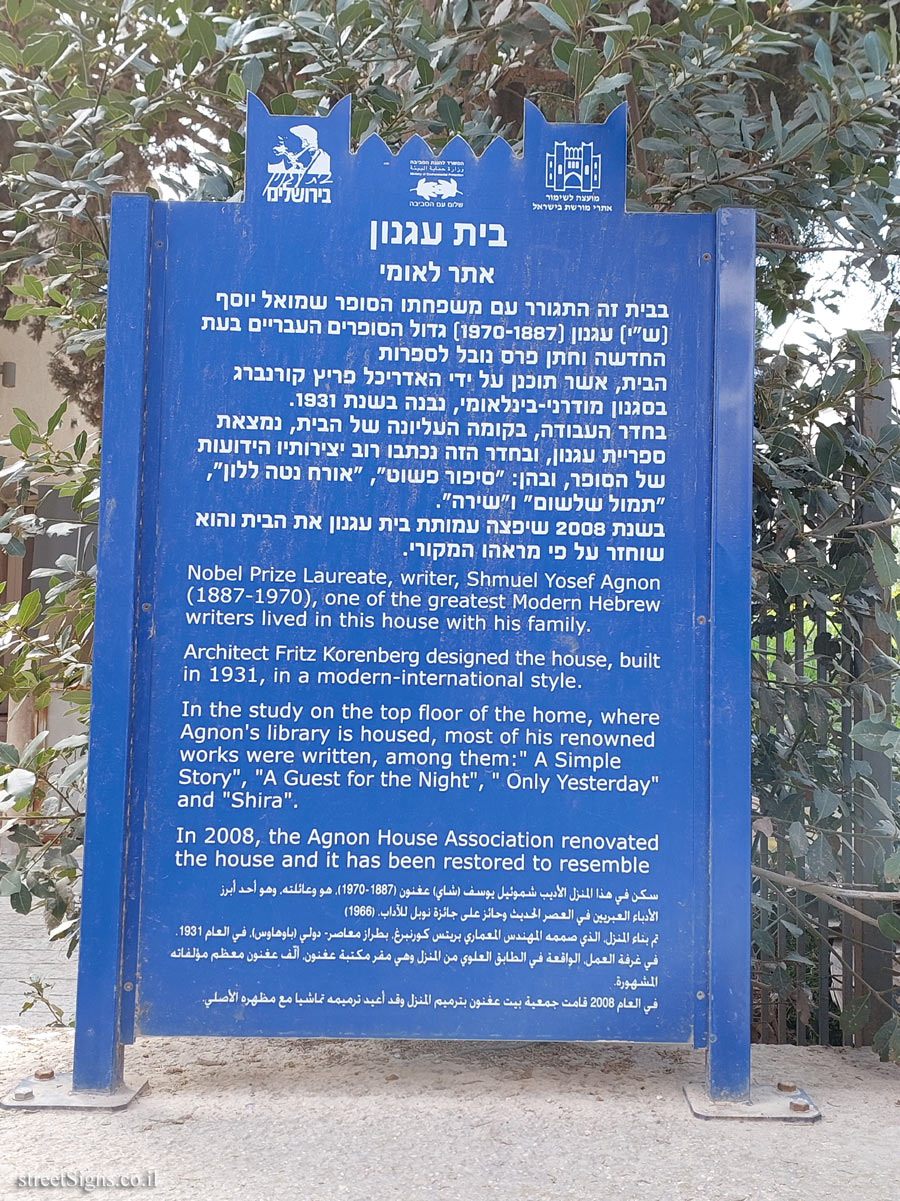 Click for sign's details Translation of the text on the sign
Click for sign's details Translation of the text on the sign:
Beit Sai Agnon in Jerusalem
Agnon’s garden secret An exhibition to mark the 50th anniversary of the death of Shi Agnon, winner of the Nobel Prize in Literature
Welcome to Agnon Garden. The house was built in 1931 as a modest and restrained version of the international "Bauhaus" style. The house is one of the few that survived from the original houses of the Gardens neighborhood in Talpiot.
The garden in front of you is 90 years old. Agnon planted the cypresses next to you as well as other trees with his own hands. Agnon’s humble and poetic attitude towards nature is evident in his life. as in his stories. In Agnon’s writing about plants there is a constant connection between his belief in the creator of the world and the actual properties of trees, flowers and celestial bodies. His in-depth observation of the plant world is translated in his writings into rich colors that have a unique charm. Precisely these days. When the call to go out into the open spaces is heard, it is an opportunity to deepen the wonderful relationship between man and nature.
Curator: Tama Crudo-Weiss. Designer: architect Ayala Ben David
"There is a person whose mind is at ease among mankind and there is a person whose mind is at ease precisely when he walks alone in gardens and orchards in a place with nice air, therefore we need to set times for the trip."
[Image]
Agnon in the garden, 1966, Dan Hadani Archive, Pritzker Family National Photo Archive, National Library, photo: Yachin Hirsch
Learn about:

 Click for a larger image
Click for a larger image  Click for a larger image
Click for a larger image  Click for a larger image
Click for a larger image  Click for a larger image
Click for a larger image  Click for a larger image
Click for a larger image  Click for a larger image
Click for a larger image  Click for a larger image
Click for a larger image  Click for a larger image
Click for a larger image  Click for sign's details
Click for sign's details